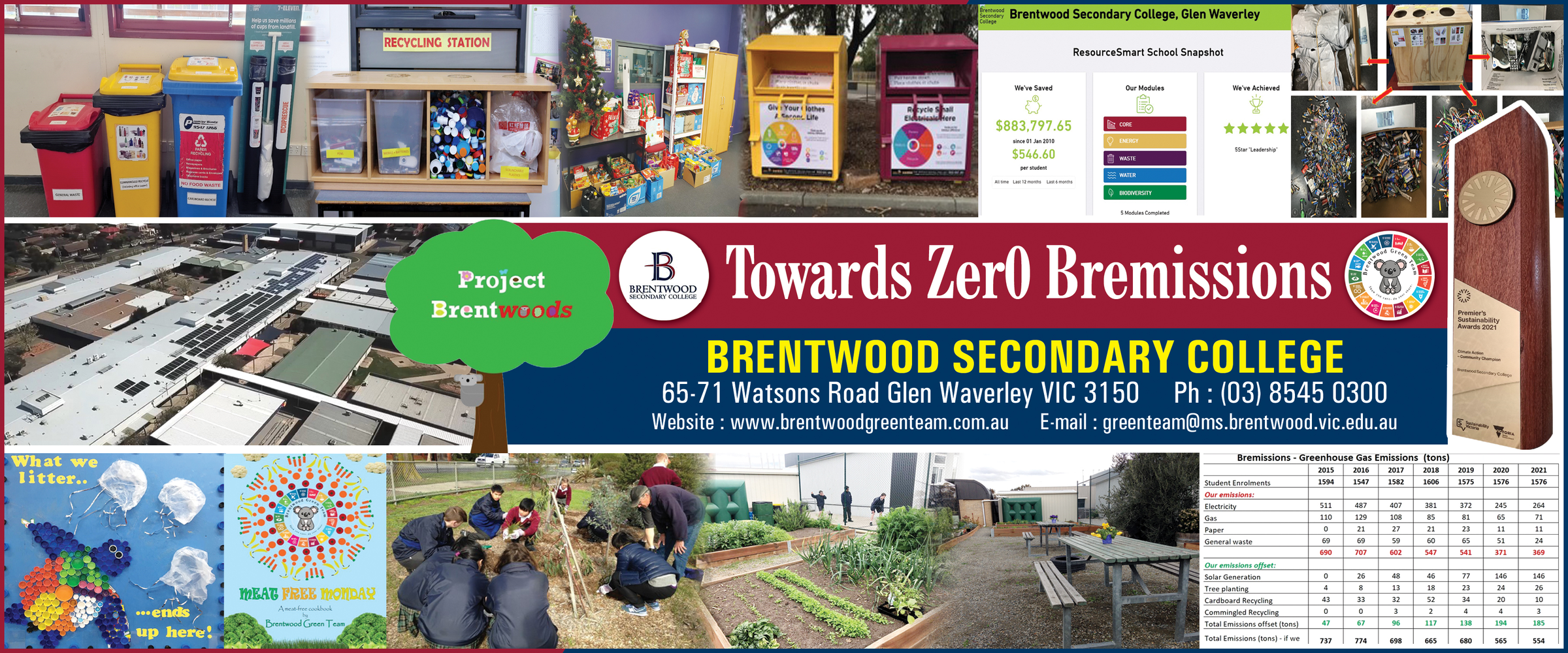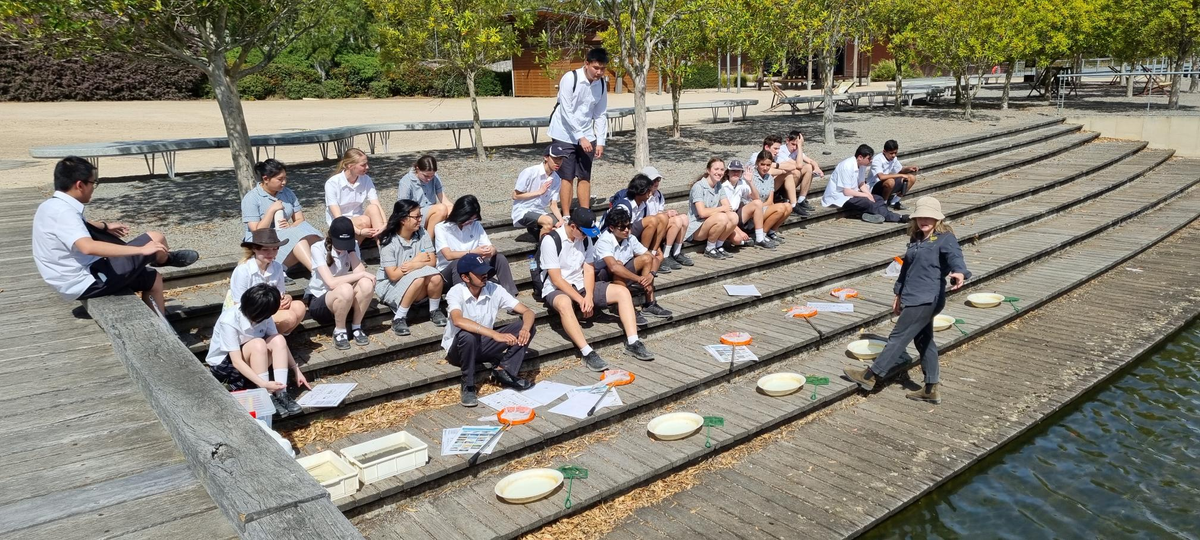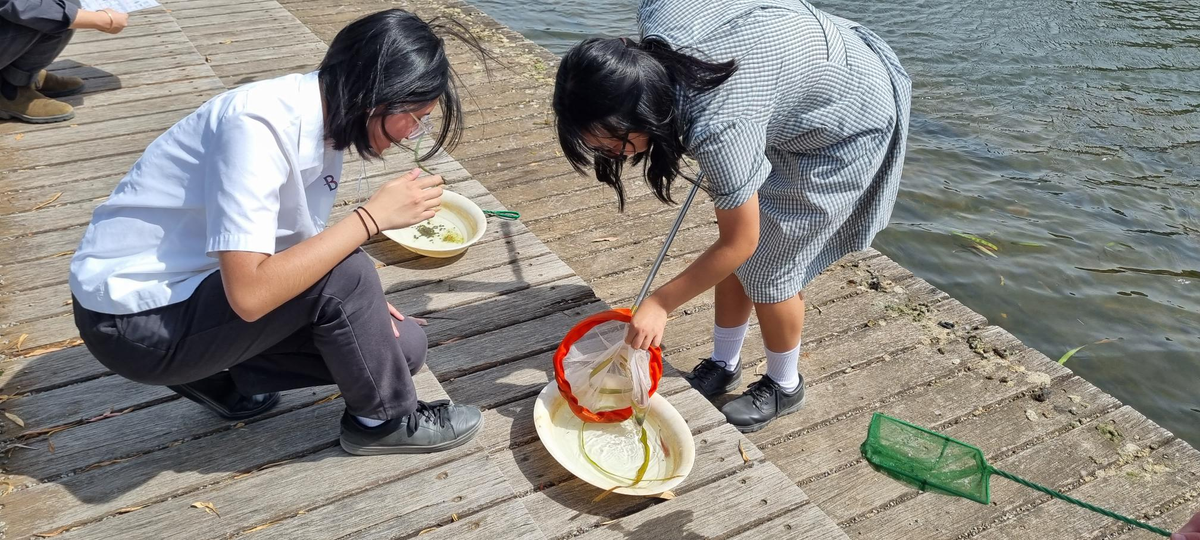Sustainability

Environmental Science Excursion to RBGC
On the toasty 16th of February, the Environmental Science students of Years 10 - 12 travelled to the Royal Botanica Gardens of Cranbourne, seeking knowledge about our native plants and animals, more specifically our Southern Brown Bandicoots.
Attending an educational presentation, we discovered the crucial need for Southern Brown Bandicoots and the unfortunate decline in their numbers. Through a walk in the bushes, we came across many critters and a lookout that showcased the problematic, ever-growing urbanisation in Cranbourne.
We were also granted access to view their high-tech tracking pad (aka sand) and became accustomed to methods that we can take to help enhance their survival. (iNaturalist app).
We are honoured and thankful for the opportunity to go to the gardens and gain this experience.
Catherine Palenzuela & Ellie Kang, Year 10 Students
This week, the Year 11 Environmental Science class had the incredible opportunity to visit the Royal Botanical Cranbourne Garden to explore the native ecosystems of Australia. It was an experience that broadened our knowledge on the subject and opened our eyes to the beauty and complexity of the natural world.
To start our visit, we participated in a nature walk led by an expert guide, who shared their vast knowledge of the local flora and fauna with us. We were able to observe and learn about a variety of plant species, and different native animals that frequent the gardens. It was truly amazing to see how the different elements of the ecosystem worked together in a delicate balance to support one another.
After the nature walk, we were able to explore the gardens further and investigate the intricate relationships between the different components of the aquatic ecosystem. By participating in an activity where we fished for different aquatic creatures, we were able to observe firsthand how the quality of water systems can have an effect on the species of invertebrates that inhabit the area and how each element of the water system plays an important role in maintaining the health and vitality of the ecosystem.
Overall, our visit to the Royal Botanical Gardens Cranbourne was an enriching experience that allowed us to deepen our understanding of the importance of preserving and protecting our natural world. We left the gardens with a renewed sense of appreciation for the delicate environment that surrounds us and its significance to the future health of the world.
Tess Macpherson, Year 11 Student
On the 16th of February the Years 10, 11 and 12 Environmental Science classes went on an excursion to the Royal Botanic Gardens Cranbourne (RBGC). The RBGC, also called the Australian Garden, is a vast, beautiful land filled with remnant vegetation, most of which is native to Australia.
The Year 12 students focused on learning about and observing the Southern Brown Bandicoot, an endangered, sharp-nosed marsupial that loves to dig holes for food. Although we did not see any adorable bandicoots that day, we learnt to observe, manage and minimise any threats directed to the Southern Brown Bandicoot population.
Throughout the day we looked out for diggings, footprints and scats of various animals and learnt how to differentiate them. We would like to thank the Royal Botanic Gardens Cranbourne for allowing us to experience, explore and educate ourselves on many different issues such as the threat from domestic pets on wildlife and the effects of rapid urbanisation. Despite so, the gardens are filled with various critters and wildlife of all sizes and the Royal Botanic Gardens does an amazing job on spreading awareness and maintaining such a beautiful landscape. Once again we sincerely thank the Royal Botanic Gardens for allowing us to see how in real life many of the skills we learn in Environmental Science are used by the scientists and staff themselves.
Chinmayi Jonnalagadda, Year 12 Student










